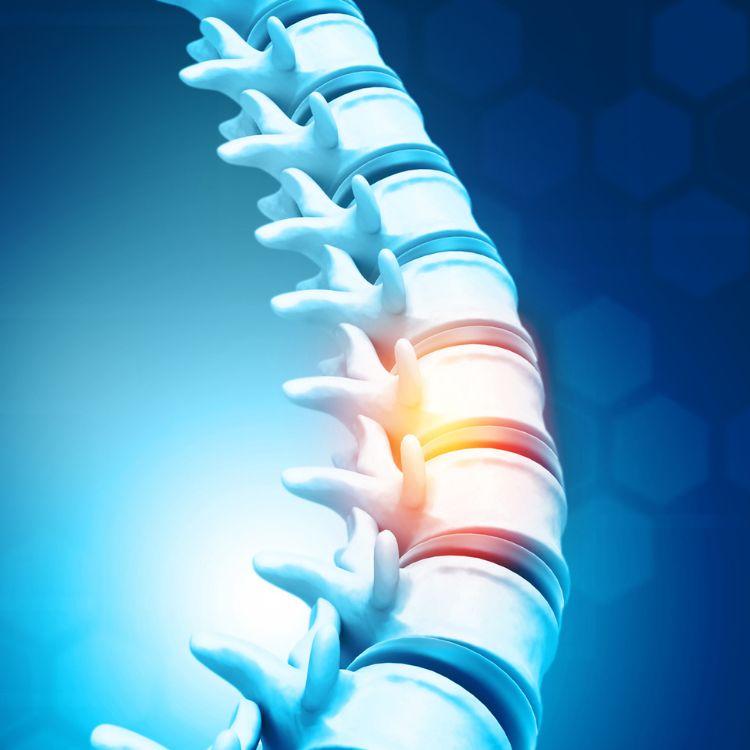What Is Intrathecal Pain Therapy?
Intrathecal pain therapy works by delivering small doses of analgesic directly to the pain receptors in the spinal cord, blocking the message to the brain. Because the doses are small and applied directly at the site of pain receptors, the entire body is not flooded with medications, and therefore negative side effects such as grogginess, confusion, and over sedation are usually avoided.
A surgically implanted pump delivers medication in small, regular doses. The medication goes through a catheter to the intrathecal space around the spinal cord where it most effectively blocks pain signals. Exact dosages and frequency of delivery are determined by the physician.
How Will I Know If It Will Work for Me?
Once you and your doctor have decided that this is an option for long-term treatment, a trial will be arranged. A temporary catheter will be placed near your spinal cord and attached to an external pump. The trial usually lasts about 3 days and gives you a good idea of the degree of pain relief the pump will provide. A successful trial will reduce your pain by at least 50%. During the trial, you should notice an improvement in your ability to perform daily activities.
What Are the Potential Risks of Intrathecal Therapy and the Surgery to Implant the Pump?
The potential risks of surgery to implant an intrathecal pump include any complication that can also occur with other types of surgery and anesthesia. These include:
- Bleeding
- Headache
- Spinal cord injury
- Hardware difficulties
- Infection
- Allergic reaction
- Failure to relieve pain
- Paralysis
There are some risks that are unique to the implantation of the infusion surgery and anesthesia. They include:
- Infection
- Accumulation of fluid in the pump pocket site
- CSF leakage
- Bleeding
- Spinal headaches
The catheter could leak, become kinked, disconnected, or dislodged, thereby requiring additional corrective surgery.
A device component could fail, making it necessary to replace it. You could experience side effect or overdose symptoms of the drug being infused through the pump.
It is important that you discuss with your doctor the potential risks, complications, and benefits regarding this therapy prior to giving your informed consent for treatment.
Surgery
After a successful trial, you and your doctor will discuss the best position for the placement of the pump. The pump implantation is a surgical procedure that requires a short hospital stay.
There will be two incisions, one in the abdomen and one in the back. The pump will be placed underneath the skin at one side of the abdomen, and the catheter will be inserted into the spinal canal through a smaller incision in the back. The other end of the catheter will be tunneled under the skin around to the pump at your side.
After Surgery
There will be some discomfort at the incisions sites. Your doctor may prescribe something to help relieve post surgery pain and an antibiotic to prevent infection. Infection is rare, but you do need to be aware of the signs of infection.
Signs of Infection
- Fever – even one degree.
- Increased pain at the incision site.
- Drainage that is pus-like in nature.
- Redness and swelling at the incision.
- Heat at the incision.
- Unpleasant odor at the incision.
Other Symptoms to Report Immediately
If you experience clear, watery fluid draining from your wound, or develop a headache when you are upright, you may have a spinal fluid leak. You should notify your doctor’s nurse or the doctor on call right away.
You will want to limit your activity for 6 to 8 weeks in order to prevent the catheter from moving before healing is complete. After the incision has healed, the pump site will require no special care.
Oral medications will be reduced as the amount of medication released by the pump is increased. It will take several weeks to reach the optimal dosage.
Maintaining Your Pump
You will schedule regular appointments with your doctor for pump refills. At each visit your pump will be checked to be sure it is working properly.
Work with your doctor to find the effective medication dosage for you.
Call your doctor’s nurse and report any unusual reactions to the medication.
Call your doctor’s nurse immediately if you hear beeping sounds from the pump. It will beep to signal that attention is needed: a refill is due, the battery needs to be changed, or there is a problem with the pump delivering medication.
Do not participate in activities that could result in a blow to the pump site.
Carry your pump identification card with you at all times.
Consult with your doctor before scheduling any diagnostic tests such as MRI or other diagnostic imaging, or before engaging in treatments that could involve changes in atmospheric pressure (long flights, unpressurized flights, or hyperbaric chamber) or extreme changes in temperature (sauna or hot tub). Extreme temperature or pressure changes may result in the pump releasing too much medication or not enough.
You can expect the battery to last 3 to 5 years depending upon the amount of medication the pump delivers. At the end of battery life, the pump will need to be replaced.
For more detailed information regarding living with an intrathecal pump, refer to the patient handbook.


